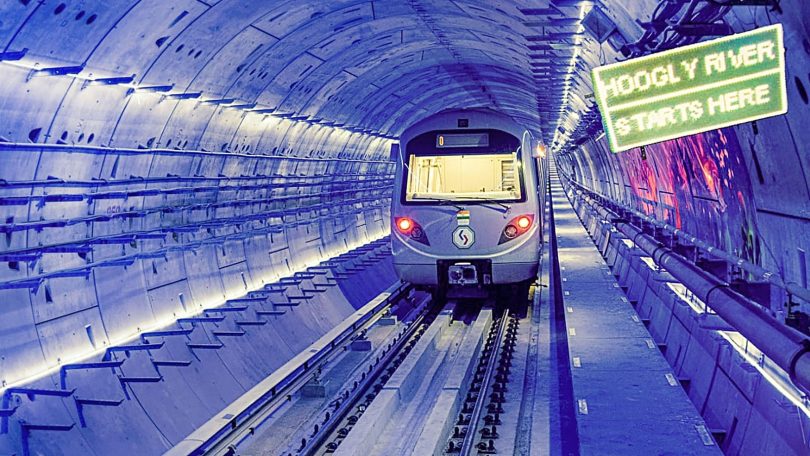[ad_1]
Prime Minister Narendra Modi today unveiled multiple metro projects across Kolkata, Agra, Pune, Kochi and the Duhai-Modinagar (North) section of Delhi-Meerut RRTS Corridor. Experts say that these infrastructure projects are expected to induce rapid urbanisation and at the same time help decongest metro cities. These are also likely to have an impact on property prices in these areas depending on the location, land use, and the overall potential of the micro-market.

These infrastructure projects augur well for simultaneous decongestion in high growth cities and unlock residential, commercial and industrial growth potential across new transit corridors, said real estate experts.
Infrastructure projects that were inaugurated today
The Prime Minister today inaugurated the Kolkata Metro’s Howrah Maidan – Esplanade Metro section, Kavi Subhash – Hemanta Mukhopadhyay Metro section and the Taratala – Majerhat Metro section (part of Joka- Esplanade line).
Also Read: Modi in Kolkata: PM unveils India’s 1st underwater Metro route, other projects of ₹15,400 crore
He also inaugurated the Pune Metro from Ruby Hall Clinic to Ramwadi stretch. He laid the foundation stone for extending the Pune Metro Rail project Phase 1 between Pimpri Chinchwad Metro-Nigdi.
Also Read: Pune Metro’s reach set to expand up to 30 km
The Kochi Metro Rail Phase I Extension project (Phase IB) from SN Junction Metro station to Tripunithura Metro station was also opened.
He inaugurated the Agra Metro’s stretch from Taj East Gate to Mankameshwar.
Also Read: PM Modi virtually inaugurates Agra Metro 9 months ahead of schedule, Yogi Adityanath takes maiden ride
The Duhai-Modinagar (North) section of Delhi-Meerut RRTS Corridor was also inaugurated today.
Also Read: Delhi-Meerut RRTS corridor: PM Modi virtually inaugurates new section, flags off Namo Bharat train | Details
Impact of Metro connectivity on real estate markets
The implementation and expansion of metro rail or RRTS have a significant positive impact on real estate development along the corridor. As a result of changes in land use, there is a higher level of densification and an increase in land prices due to improved last-mile connectivity to the locality.
“It has been observed that in many cities, the launch of metro rail leads to a property price increase of over 50%, depending on factors such as location, land use, and the overall potential of the micro-market. It is encouraging to witness the enhanced connectivity between tier I cities, metros, and tier II cities, which in turn stimulates the overall development of the city and attracts talent from distant locations,” said Jerry Kingsley, Head, Strategic Consulting and Valuation Advisory, India, JLL.
The launch of new metro lines will have an impact on the real estate markets both within and beyond their influence zones. “Metro connectivity raises an area’s appeal to both residential and commercial developers and investors by improving its accessibility and desirability. Property values usually grow in response to this increasing demand, providing existing property owners with significant capital appreciation and drawing in real estate expansion projects,” said Santhosh Kumar, Vice Chairman – ANAROCK Group.
The Kolkata metro line will not only enhance accessibility to previously untapped locales but also stimulate diversified economic growth, said real estate experts.
Also Read: Gurugram Metro Project: Will it lead to an increase in real estate prices; revive the old city
The Howrah – Maidan Esplanade underwater Metro Section between the suburban expanse of Howrah and the heart of Kolkata is poised to ignite inclusive development and fortify economic foundations within the region. “In parallel with numerous notable infrastructure endeavors worldwide, it is foreseen that this metro line will not only enhance accessibility to previously untapped locales but also stimulate diversified economic growth,” said Abhijit Das, Senior Director East, Knight Frank India.
Kolkata, serving as the gateway market to the northeast, an area witnessing rapid development in logistics, warehousing, industrial sectors, and burgeoning tourism, stands to benefit immensely, he added.
The seamless connectivity between prominent locations of the city, including the thriving IT hub of Salt Lake Sector V and residential sub-markets of Howrah and Sealdah, is set to accelerate demand of both commercial and residential real estate in nearby localities, said Vimal Nadar, Senior Director and Head, Research at Colliers India.
Given the price arbitrage Kolkata offers in terms of office rentals, MNCs looking to tap into the regional talent base can opt for city specific operational expansion. Developers too are likely to identify futuristic office hotspots and infuse high quality supply in select pockets within the city, he said.
Decongest metro cities
“This would have a huge impact on the rapid urbanisation and at the same time, decongesting the metros. The environment-friendly infrastructure would further give a huge boost towards development of affordable housing projects in these peripheral areas getting connected,” said Ravi Shankar Singh, Managing Director, Residential Transaction Services, Colliers India.
The government should further take more initiatives in acquiring large land parcels in these locations to develop affordable housing projects. This connectivity would further enhance economic and social opportunities for people living in these areas leading to a positive impact on GDP, he added.
Better metro connectivity cuts down on travel times and expenses for commuters outside of the local influence zones, allowing people to live farther from their places of employment and still have easy access to cities.
“This promotes balanced urban growth and reduces the strain on excessively crowded city centers because of real estate development and investment in these newly connected areas, and widening the urban sprawl,” Kumar added.
[ad_2]
Source link








